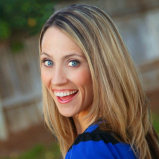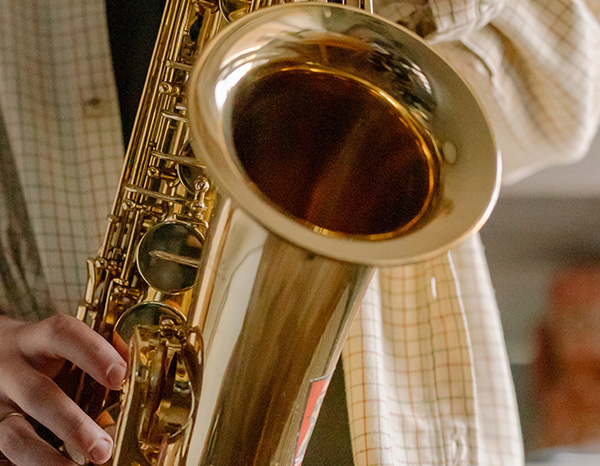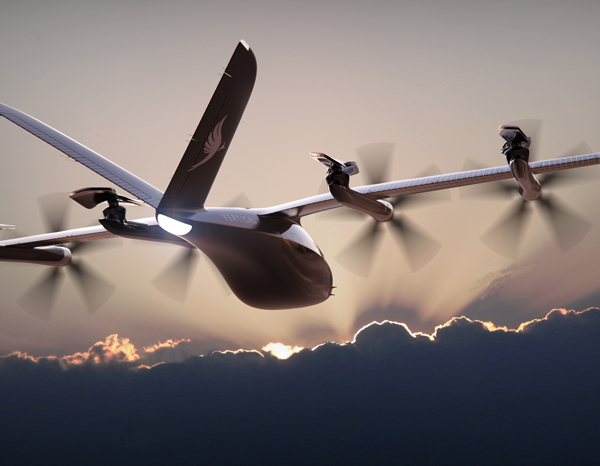Digital Twins Will Change the World

Imagine you had a digital twin — a computational model of yourself with not only all of your physical and physiological characteristics uploaded into it in real time, but also your thought patterns, personality traits, and opinions. Suddenly, doctors would know exactly what treatments would be best customized for you if you got sick or experienced emotional trauma, or even what medical abnormalities could be in your future and how to prevent them in advance. While it’s the kind of material screenwriters latch on to for TV episodes and movies, the day may be on the horizon where we can drop the “fiction” in this type of “science fiction.” In fact, this kind of technology is already being used to track machines and systems in fields like aerospace, automotive, energy, utilities, and building design, with enormous advancements around the corner. In this episode, we speak to Dr. Karen E. Willcox — an expert on digital twins — about what digital twins can do for us in the present, and how they could greatly change the world in the future.
Credits
Interview with Dr. Karen E. Willcox, Director, Oden Institute for Computational Engineering and Sciences
Producers: Taylore Ratsep, Jolie Hales
Hosts: Jolie Hales, Ernest de Leon
Writer / Editor: Jolie Hales
Referenced on the Podcast
Meet Dr. Karen E. Willcox – kiwi.oden.utexas.edu
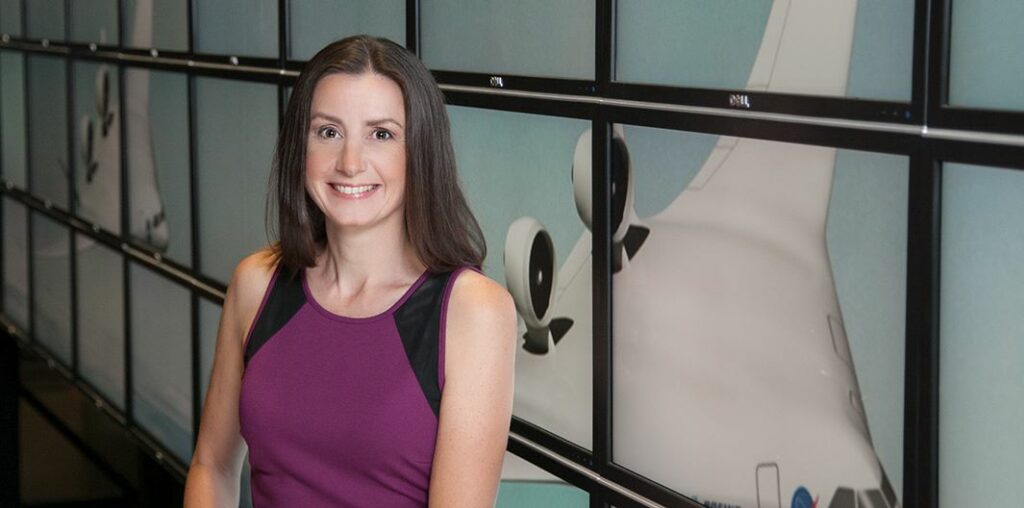
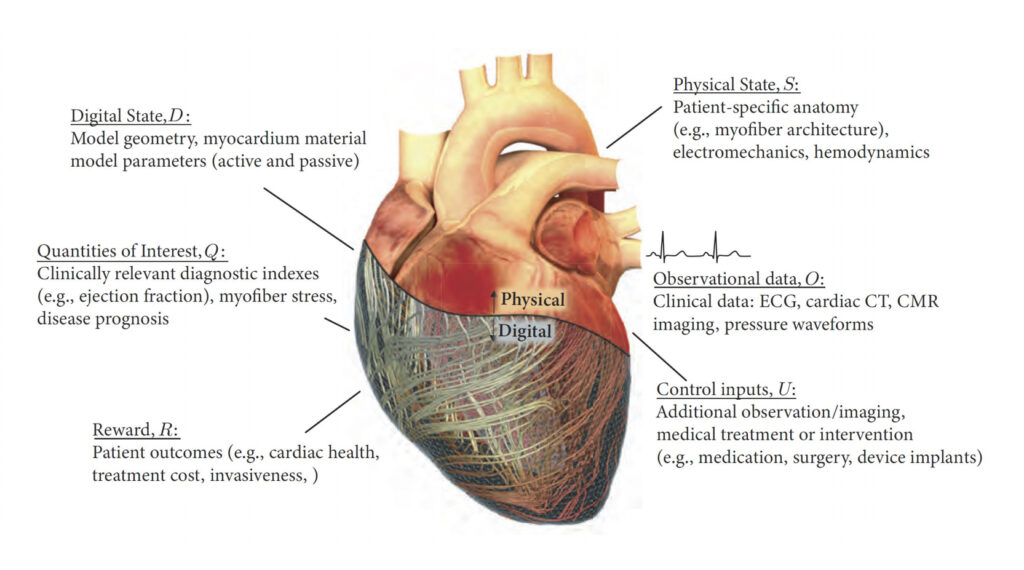
Article: “Apollo 13: The First Digital Twin” – Stephen Ferguson, Siemens
Apollo 13 – Original 1995 Movie Trailer (Universal Pictures)
“Worst Fight on the Internet” – Star Trek (CBS)
Jolie and Ernest’s “Digital Twins”
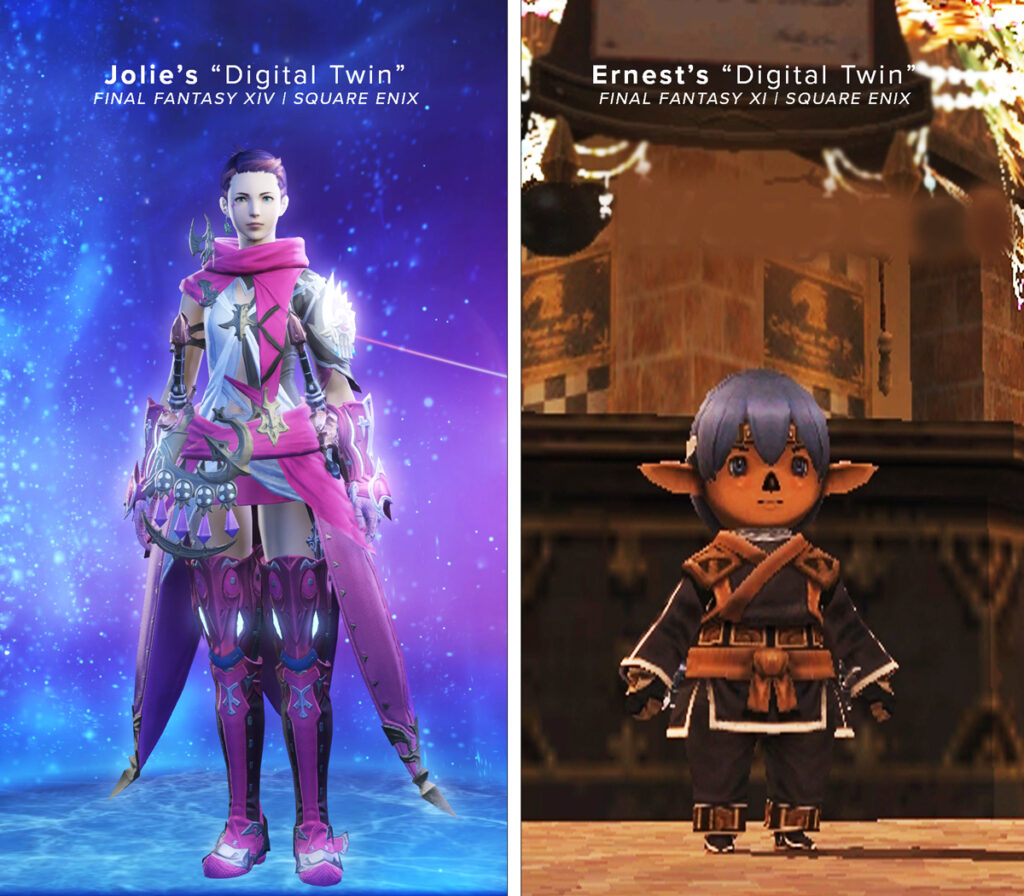
Episode Citations
- Ferguson, Stephen. Apollo 13: The First Digital Twin. Siemens blog. https://blogs.sw.siemens.com/simcenter/apollo-13-the-first-digital-twin/ (Accessed May 27, 2021)
- NASA. Apollo 13 – Houston, We’ve Had A Problem (Full Mission 12). Uploaded by lunarmodule5, Oct. 10, 2012. https://youtu.be/kfPrnzMPesg
- CBS News. CBS NEWS – Apollo 13 CM Explosion Coverage. Uploaded by JFK1963NEWSVIDEOS, May 9, 2020. https://youtu.be/3dFahFXGxMM
- Apollo 13 re-entry and splashdown as seen live on tv. Uploaded by Matthew Travis, November 11, 2010. https://youtu.be/kmGP4o272ac
- Apollo Simulators Behind the Scenes. Uploaded by The Space Archive, Dec. 27, 2019. https://youtu.be/XD047GwLtSY
- IBM. Introduction to Digital Twin: Simple, but detailed. Uploaded by IBM Internet of Things, June 27, 2017. https://youtu.be/RaOejcczPas
- Why digital twins will be the backbone of industry in the future. Siemens. July 4, 2019. https://youtu.be/ObGhB9CCHP8
- Gene Kranz overview of Apollo 13 issues Part 2 of 2. Uploaded by mrFalconlem, March 10, 2014. https://youtu.be/qw6bHQm6EMA
- Gene Kranz Announces CO2 Adapter to Save Apollo 13 Crew. Uploaded by The Space Archive, April 13, 2020. https://youtu.be/8o75XT6y-mg
- Digital Twin. Wikipedia. https://en.wikipedia.org/wiki/Digital_twin (Accessed May 27, 2021)
- Apollo 13. Wikipedia. https://en.wikipedia.org/wiki/Apollo_13 (Accessed May 27, 2021)
- Universal Pictures. Apollo 13 Official Trailer #1 – Tom Hanks Movie (1995) HD. Uploaded by Movieclips Classic Trailers, Dec. 12, 2011. https://youtu.be/KtEIMC58sZo
- Star Trek – Kirk vs. Gorn. CBS, July 6, 2009. https://youtu.be/4SK0cUNMnMM
Jolie Hales:
Just based on your class and your level and your equipment and maybe your material and whatnot. And I’m obviously going to cut all of this part out because everybody else is going to be completely lost.
Ernest de Leon:
They’re going to be like, “What the hell is going on here?”
Jolie Hales:
“Please stop talking about a video game we don’t know anything about.” Hi everyone. I’m Jolie Hales.
Ernest de Leon:
And I’m Ernest de Leon.
Jolie Hales:
Welcome to the Big Compute Podcast. Here, we celebrate innovation in a world of virtually unlimited compute, and we do it one important story at a time. We talk about the stories behind scientists and engineers who are embracing the power of high performance computing to better the lives of all of us.
Ernest de Leon:
From the products we use every day to the technology of tomorrow, computational engineering plays a direct role in making it all happen, whether people know it or not.
Jolie Hales:
Ernest, so I know you’re a gamer and I am curious, have you ever played a video game or maybe something like Second Life where you tried to create a digital version of yourself? Or are you the kind of person who doesn’t want your video game digital personas to look anything like your real life persona?
Ernest de Leon:
So I’m kind of in the middle on that one. In a game, what matters to me most is that their hair is like my hair.
Jolie Hales:
Okay, cool.
Ernest de Leon:
And that’s because I have long hair. It’s usually in a ponytail, so I like to have my characters have long hair. And then aside from that, whatever, it doesn’t matter. What about you?
Jolie Hales:
Okay, that makes sense. Maybe this makes me egotistical, but I’m the kind of person who typically tries to model all of my video game characters after myself as much as possible. I don’t know, I guess it’s kind of fun to see myself in these fantastical worlds.
Ernest de Leon:
I think that’s the case for most people who go into these kinds of Second Life or other ones like it. It’s kind of like a second reality to them. They live a different life, but they want to be the same person in that other life.
Jolie Hales:
As an example of this, so as you know, because we’ve talked about this before, I’ve been a big fan of the Final Fantasy video game series since I was a kid. And I know you have too, and I’ve beat just about all of them, except for Final Fantasy XIV.
Final Fantasy XIV narrator:
An adventurer arrives in Eorzea. One whose tale is yet unwritten.
Jolie Hales:
But for those who don’t know what Final Fantasy XIV is, it’s an MMO, which stands for “massively multiplayer online” game. Or in other words, people all over the world log in and they play with each other using custom created characters. And while there are storylines within the game, the game itself really never ends. They’re always releasing new content and missions to accomplish. Another MMO people might be familiar with is World of Warcraft.
Viral Video:
“Leeroy Jenkins!!” ….”Oh my god, he just ran in.”
Jolie Hales:
And because these MMOs never really end, they have a reputation for being an epic time suck.
Ernest de Leon:
And don’t I know it. So you mentioned Final Fantasy XIV. I have never played it, but I came from Final Fantasy XI and that was another MMO. And that one I played for about a decade. And when you talk about time suck, there’s a lot of time… And that’s one of the reasons why I won’t play XIV now. I just don’t have the time.
Jolie Hales:
Right, exactly. And that’s why I delayed it for so long. But then I was talking to my brother —
Jolie’s Brother:
What??
Jolie Hales:
–and my brother-in-law–
Jolie’s Brother-in-law:
Spencer, you need to get in the crystal, like asap!
Jolie Hales:
–and my husband–
Jolie’s Husband:
I’ll just take care of the crystals dropping.
Jolie Hales:
–and we’re one big nerdy family, and we all decided we’re going to give it a shot together as a way for us to hang out together, even though we live in different states, once the toddler is in bed for the night, right? So, that’s how I justified it.
Ernest de Leon:
I get it.
Jolie Hales:
And when I built my custom character, instead of picking one of the cat people or the Vieras, which are these bunny rabbit people, or a tiger or a dwarf or something, I chose a human character and tried to make her look as similar to me as possible, like in the jawline, the eye size, hair. And of course, she’s a kick button ninja with glowing pink daggers. So, ya know, a direct copy of my real life persona.
Ernest de Leon:
Oh, of course. And I sort of did that. When I started Final Fantasy XI, I didn’t know what to pick. So I started off with a human. It was kind of boring. And then I got an elf, that was boring. And that’s when I finally settled on the Tarutaru, which is the little tiny ones that are major magic casters. And from then on, I just played as that, but I made sure that they had long hair.
Jolie Hales:
Yeah, of course. And a ponytail, I assume.
Ernest de Leon:
And a ponytail, that’s right.
Jolie Hales:
Well, you’re going to have to send me a picture of your character because that just sounds super adorable. We’ll post it on the episode notes, our digital personas. In playing Final Fantasy XIV, I’ve got to say, it’s already pretty impressive how realistic video games are starting to get with custom character creation. And Final Fantasy XIV is kind of older graphics, but even still, it’s getting to the point where I already consider my Final Fantasy XIV character kind of my digital doppelganger, right? Or you might even say my digital twin.
Ernest de Leon:
I knew you were going to do that. I knew it.
Jolie Hales:
I’ve got to get into the subject somehow. It’s interesting, right?
Ernest de Leon:
Before I even read the next line of the script, I was like, oh, I know where this is going.
Jolie Hales:
On that, am I that obvious? But it got me thinking, what if someday there was a real digital twin of me. Not one that just looked like me, but a digital model that had all the historical and real-time data of my physicality and circumstances uploaded into it for each organ, each bone, maybe even my brain activity. I mean, it’s kind of freaky to think about because a detailed digital representation of myself like that could potentially predict my future and come with its own ethical dilemmas. But just thinking about the beneficial side of things — Like, if I broke a bone, I would have a personal digital model that could determine what the best treatment would be for my specific bone instead of some, one size fits all treatment. Or if I caught a virus, this digital twin could predict which doses of which medicines would be best to treat my particular case in my particular body. I mean, heck, maybe it would even be able to customize the vaccine just for me so I wouldn’t even be susceptible to that particular virus in the first place. I mean, theoretically, it could even be able to predict when I would likely develop maybe a certain cancer or medical condition, not only making it possible to begin customized treatments early, but potentially even knowing how to prevent the cancer or illness from developing in the first place. I mean, this is all very utopian and not really reality at this point, but we’re talking about the potential for incredibly personalized medicine here, which is a bit beyond my Final Fantasy XIV character, I guess. So while technology may not have evolved to the point of mainstream personalized medicine, parts of this idea are actually already in practice and not just in healthcare and life sciences, but in aerospace, energy and utilities, manufacturing, automotive, building design, and many other industries. We may not be to the point where people have complete digital twin counterparts, but many products and systems used today do. And that’s what got me interested in talking to this person.
Karen Willcox:
I’m the director of the Oden Institute for Computational Engineering and Sciences at the University of Texas at Austin.
Jolie Hales:
Meet Dr. Karen Willcox, who is also a professor of aerospace engineering and engineering mechanics at UT Austin and an external professor at the Santa Fe Institute.
Karen Willcox:
Basically, I’m an aerospace engineer. Although I work at the interfaces of aerospace engineering, applied mathematics and computing. And really, my research group works on computational methods that enable design and decision-making for next generation engineering systems, mostly in aerospace applications, but we dabble in many different applicants.
Jolie Hales:
And if you look up her resume online, you can see how accomplished she really is because she’ll never be the first one to tell you. And as you may have guessed by her awesome accent, Karen was born and raised in New Zealand and her story is kind of cool. She was the daughter of an air conditioning fitter and a secretary, neither of whom finished high school. And then Karen went on to become the first person in her entire extended family to go to college. And she’s obviously brilliant. And the first time, in fact, that she left New Zealand was to start grad school at MIT. So I imagine that was a little bit of a transition. She’s also a mom of two young kids and an avid trail runner. So, she has a lot of free time I’m sure.
Ernest de Leon:
Of course.
Karen Willcox:
They’re at a good age where they can bike just about at the speed that I can run on the trails.
Jolie Hales:
Karen is what I would call an expert in digital twins. In fact, when we were talking about the possibility of having her on the podcast, she used a hypothetical example to introduce me to the whole digital twin concept. And I want to paint the same picture for you here. So Ernest, are you ready to lace up your running shoes?
Ernest de Leon:
If I owned a pair, jokes on you.
Jolie Hales:
You don’t have a single pair of running shoes?
Ernest de Leon:
No, I don’t run. I think I told you this before. I’m not running anywhere. They always talk about humans having fight or flight responses. Mine is only fight. There’s no flight. I’m not running. If someone tries to attack me, it’s going to be a fight. That’s all there is to it. If it’s a lion, well, I guess it’s over because I cannot run.
Jolie Hales:
Well, I’m not sure that we can outrun a lion anyway.
Ernest de Leon:
Well that’s true, but the point is I’m not going to run away. That’s just how it is. I’m too slow.
Jolie Hales:
Fair enough. So you’ll really have to use your imagination for this one.
Ernest de Leon:
Yeah.
Jolie Hales:
Okay, so imagine you’re running out on a favorite remote trail. It’s a crisp, partly cloudy morning. Perfect for getting out there to collect your thoughts and exercise. You run over a hill and through some trees and can see the city landscape disappear in the distance, total freedom. Just then, your foot hits divot in the trail, your ankle twists, and you hit the ground. After the dust settles around you and you realize what has happened, you look yourself over. There are a few scratches on your arms, probably a bruise forming on your knee, but at least you didn’t fall into a cactus or a nest of rattlesnakes or something.
Ernest de Leon:
You definitely don’t want to fall anywhere near a rattlesnake.
Jolie Hales:
That would definitely change the story. So then you notice a throbbing pain in your leg. So slowly, you pull yourself up on your good leg and you carefully place the hurt foot on the ground. With every bit of caution you can muster, you gradually put weight on that foot to assess what to do next. Think about this specific moment. Your next actions will depend completely on your assessment. If your leg feels fine, you’ll probably get back to your run, trying to be maybe a bit more cautious this time. If your leg’s in a decent amount of pain, you might bag the run for the day, turn around and hobble back home. And if your leg is in really bad shape, maybe you can’t put weight on it at all, you might have to do that thing you never wanted to do and call a rescue team. It’s this assessment process I want you to really consider right now. When you’re putting weight on your injured leg, you’re collecting information about how it actually feels in that moment, and then using that information to make a real-time assessment of just how bad the injury is. An x-ray later will show you what the damage is, but for now, you just need to know what you’re capable of doing in that injured state. Can you run? Can you walk? How far could you go? How much more damage could you cause for moving? The information about the current state of your leg is feeding into your brain and updating the estimate of your current capabilities helping you make a decision about what you do next. Now, imagine if we could equip an engineered system with that kind of self-awareness, one that can reference these data and use them to calculate the state of your current condition, as well as predict what will or should happen next. That’s the idea behind a…
Ernest de Leon:
Digital twin.
Jolie Hales:
You guessed it. How did you know, Ernest?
Ernest de Leon:
I read the script.
Jolie Hales:
But yes, a digital twin, or as Dr. Karen Wilcox explained…
Karen Willcox:
It’s really a computational model. It’s a virtual model, or maybe it’s a set of coupled models that mimics a particular physical system. And in particular mimics the properties and the behavior of that particular system.
Jolie Hales:
The ever reliable Wikipedia defines a digital twin as “a virtual representation that serves as the real-time digital counterpart of a physical object or process.” I love that I’m quoting Wikipedia.
Ernest de Leon:
It’s always the best.
Karen Willcox:
So if everybody thinks of your favorite system, for me it would be an aircraft, but it could be a spacecraft, a car, a bridge, a building, whatever it is that you get excited thinking about. And then think of a digital model of that system. So now not a generic digital model, but a digital model that is tied to that one particular aircraft or that one particular bridge.
Ernest de Leon:
So this isn’t just, hey, this is a digital model representing a certain type of car, but this is a digital model that’s representing this exact car that’s sitting in this exact garage owned by this exact person at this moment.
Jolie Hales:
Right. And Karen says that that personalization is one of the key differences between a true digital twin and any other computational model utilized by scientists and engineers.
Karen Willcox:
One application that’s of interest to me is thinking about package delivery drones. And so, imagine that every package delivery drone in the future, in the coming decade maybe, we’re going to see thousands and thousands of package delivery drones in our urban areas. So imagine each package delivery drone has its own digital twin. And what that means is that the digital twin has to reflect the ways in which each drone differs from other drones. So manufactured on different days, flown by different package delivery companies, serviced and maintained in different ways, and so on.
Jolie Hales:
Another key difference that sets digital twins apart from other computational models is the fact that digital twins are not static. Or in other words, you don’t just create the computational model and then consider it done. You keep feeding data into it.
Karen Willcox:
Rather it’s going to be living. So it’s really going to follow the physical twin through its life. And so you immediately start to see that this digital twin is not just about computational modeling, but also is going to require a close integration with data. And there’s going to need to be this sort of back and forth between the models and the data so that we can update the digital twin as for example, our delivery drone gets older and older and older and degrades and eventually gets to the end of its life.
Ernest de Leon:
Yeah, so this actually kind of reminds me, although it is a little bit different, but sort of along these lines is if you look at any Star Trek, the ship often has what we would consider a digital twin of itself in the computer system. So it always knows the status of the weapons systems or the shielding, or if a certain portion of the hall is about to buckle under weight. It’s because it’s got real-time data feeding into that digital version, and it’s constantly calculating what could happen as a result of whatever’s happening to it. And it notifies the people on the bridge what decision to make next on what to do to stop it.
Jolie Hales:
I need to watch more Star Trek in order to understand these references from you. That’s a good example.
Ernest de Leon:
Real life digital twin on board the actual device it’s twinning.
Jolie Hales:
That would suck if it suddenly said that it was going to explode in 10 minutes.
Ernest de Leon:
It does do that. That happens in several episodes and they have to either abandon ship or figure out a way to solve the problem.
Karen Willcox:
You could imagine that if you were an operator, and you have a fleet of thousands of drones, you have these digital twins of each one and you’ve been tracking what everybody’s been doing. And so, you know digital twin number seven is your star. I guess it’s a little bit like runners, Jolie. Digital twin number seven is your star. That’s the one that you give your high value package or your really tough delivery option. Whereas number 32 is like me, yesterday, where I’m feeling a bit tired and maybe not quite capable of it. So it really becomes a platform for data-driven decision-making that really reflects the changing health of a complex system or in this case, a complex fleet of systems.
Jolie Hales:
So the term digital twin is actually relatively new, even said to be a few years newer that the iPhone actually. It’s generally accepted that the term came from NASA in 2010, but the concept of a digital twin existed long before that. Like the Star Trek episodes, Ernest, weren’t those made before 2010?
Ernest de Leon:
Yes. I mean the ones where they had what we would consider the modern elk car system was next generation, which was, I think the 80s and 90s.
Jolie Hales:
Yeah, okay. Those are the ones that sound like the William Shatner ones.
Ernest de Leon:
No, William Shatner is the original series. That’s the 60s.
Jolie Hales:
Oh, that’s the series that I watched with my dad. And there’s some amazing special effects in that.
Ernest de Leon:
Oh, man. Yeah, the special effects for that era are great.
Jolie Hales:
Have you seen the one where he attacks the dragon monster and it’s this horrible fight? It’s one of the worst… I think it’s labeled the “worst fight on the internet.”
Ernest de Leon:
It was the 60s, right? So they didn’t have-
Jolie Hales:
Oh, it’s so good though.
Ernest de Leon:
They didn’t have all the modern special effects stuff. Especially if you go back and look at the first I’m going to say three or so episodes of next generation, it’s cringe-worthy. I mean, it was a new show.
Jolie Hales:
So it’s your favorite. Being a guy who, a connoisseur of Lavalantula and VelociPastor, this is right down your alley.
Ernest de Leon:
I loved it. And like I said, it was a brand new series. This was the first couple of episodes. This group of people had never worked together. So they’re trying to figure it out. And then it’s fun to watch those first couple of episodes and see how awkward the entire production was.
Karen Willcox:
You sort of look back over the history of engineering. I think you could point to many things that you might call a digital twin.
Jolie Hales:
For instance–
Karen Willcox:
Back in the Apollo program when NASA were launching Apollo craft into space, they would have simulators on the ground. So digital simulators on the ground in Houston. And of course, we’re all familiar with the Apollo 13 crisis, thanks to the movie. And this is a great example of where the idea of a digital twin became just so powerful.
Apollo 13 – Original Movie Trailer:
Houston, we have a problem… We got a wicked shimmy up here… Houston, we are getting something out into space. It’s definitely a gas or some sort… We never lost an American in space, we sure as hell not going to lose one on my watch… Odyssey, do you read me?… Well, how long does it take to power up the landing? Three hours by the checklist. We don’t have that much time…
Ernest de Leon:
I remember seeing this movie now.
Jolie Hales:
Wait, you don’t remember the movie very well?
Ernest de Leon:
No, I remember seeing it, but I watched it one time and then never watched it again.
Jolie Hales:
Oh, I thought you would have seen this one a number of times and have it memorized.
Ernest de Leon:
No, but the one-
Jolie Hales:
It just seems like your kind of movie. Well, aside from the cringe-worthy movies.
Ernest de Leon:
Right. But the one I did love was the… I can’t remember the name of the movie, but it’s the one where the asteroid’s about to hit earth.
Jolie Hales:
Oh, like Armageddon.
Ernest de Leon:
There you go, Armageddon.
Jolie Hales:
Aw, that movie’s terrible.
Ernest de Leon:
I know, but I loved it. Because again, I’m not a filmmaker. I’m not watching these things to see if this thing should earn some kind of an award. I’m there to be entertained. And they flew in and drilled into this thing and blew it up. That’s all I wanted.
Jolie Hales:
But what do you remember about Apollo 13?
Ernest de Leon:
To this day, the things that interest me most when there’s either a launch or for instance, we recently landed another Rover on Mars, right? Is to watch inside of mission control and look for that moment where whatever it is they’re trying to do happens and the entire room just explodes. There are people crying, there’s food, flying places, it’s out of control. That’s what I remember most is those types of scenes, and Apollo 13 obviously had one like that.
Apollo 13 – Clip:
Hello sir. this is Odyssey. It’s good to see you again.
Ernest de Leon:
There are various scenes in movies where they get it right. And this one from mission control was one of them.
Jolie Hales:
Yeah, it really was. And that particular moment stands out to me as well in this movie. I actually really enjoy this movie. In fact, I want to go back and watch it again, but there’s this really interesting blog that has to do with Apollo 13. And it’s written by Steven Ferguson for Siemens. And Siemens, full disclosure, is a Big Compute 20 sponsor. I’ll link to this blog in the episode notes. And this particular blog talks about how NASA basically used the digital twin concept to save the astronauts on Apollo 13.
Original Apollo 13 radio transmission:
Sir Dane, we’ve got one more item for you when you get a chance. So we’d like to stir up your cryo tanks. In addition, I have a shaft and… if you need it…. Okay, stand by. We’ve got a problem here… This is Houston. Say again, please?.. Houston, we’ve got a problem. We’ve had a buzz undervolt… Roger, main B undervolt. Standby there Dane. We’re looking at it.
News Clip:
The flight of The Apollo 13 to the moon is in serious jeopardy this morning and is not going to make a moon landing.
News Clip:
When suddenly that explosion took place and the electrical power went out and all bets were off for a moon landing, since then Houston and the man, the spacecraft itself has gotten squared away, fired off the descent propulsion system engine of the lunar module. And is now on a trajectory that will take it around the moon, headed back toward earth for a landing here on Friday… Probably.
News Clip:
But that will be a first, of course in space. And this is indeed the greatest emergency probably yet in the American space program.
Rescale ad:
From supersonic jets to personalized medicine, industry leaders are turning to Rescale to power science and engineering breakthroughs. Rescale is a full stack automation solution for hybrid cloud that helps IT and HPC leaders deliver intelligent computing as a service, and enables the enterprise transformation to digital R&D. As a proud sponsor of The Big Compute podcast, Rescale would especially like to say thank you to all the scientists and engineers out there who are working to make a difference for all of us. Rescale, intelligent computing for digital R&D. Learn more at rescale.com/bcpodcast.
Jolie Hales:
Totally not important, but interesting that the quote is actually “Houston, we’ve had a problem.” Not “Houston, we have a problem.”
Ernest de Leon:
It’s all a matter of perspective, right? It’s kind of like if someone has an accident in their pants, they’ve had a problem, but depending on where-
Jolie Hales:
What kind of example is that?
Ernest de Leon:
But depending on where they are physically, they could have a problem. So it could be either or both.
Apollo 13 – Clip:
Houston, we have a problem.
Jolie Hales:
So as our listeners probably know, Apollo 13 was a NASA mission intended for the moon in the year 1970, but then it suddenly had to about face into this rescue mission when some routine stir the oxygen tank basically ignited damaged wire insulation, and then it caused this explosion that started ventilating their oxygen supply into space. From the moment the oxygen tanks exploded, mission control worked around the clock to keep the three astronauts alive while simultaneously trying to figure out how they’d even be able to bring them 200,000 miles back to earth safely, if it was even possible. To figure all of this out, mission control turned to their system of high-fidelity simulators to help them troubleshoot and find creative ways to conserve oxygen and power for a craft that was quite literally out of this world.
Original Apollo 13 radio transmission:
Can you call in your backup E-con, see if we can get some more brainpower? We’ve got one here. Roger.
Jolie Hales:
Long before the Apollo 13 spacecraft even launched, both astronauts and mission controllers had been preparing for the mission by using 15 physical simulators for thousands of hours to anticipate all different kinds of potential scenarios in space, including instances where equipment might fail or something could go awry. Now, a simulator in itself isn’t really a digital twin obviously, but what makes the NASA simulators different with Apollo 13 is the way that NASA was able to reconfigure the simulations as they collected information from the astronauts in space. In the Siemens article I was talking about, Steven Ferguson makes the case that because mission controllers were able to rapidly adapt and modify simulations to match conditions on the spacecraft, they were using a kind of first digital twin.
Karen Willcox:
NASA were now able to take the data from the real spacecraft, which was crippled and stranded in space, take the data, feed it into the simulator on the ground. Now, dynamically update that simulator so it’s reflecting the changed conditions on board the physical spacecraft. And then use that simulator to run the simulations, to run the what ifs and investigate the different scenarios, and then ultimately inform the decisions that brought the astronauts back safely.
Ernest de Leon:
Yeah, and that makes a huge difference because access to real-time data and as much of it as you can possibly have is the only way that you can make the best decision.
Jolie Hales:
Absolutely. And for example, one particular problem with Apollo 13 that needed to be solved was how to maneuver the spacecraft and manually align it for three separate engine burns without throwing it off its trajectory toward the earth, all while the guidance computer was powered down to save the little energy that they even had. So suddenly these processes had to be done manually with the equipment down. So mission control sent teams to practice these maneuvers on the simulators, modifying the circumstances as they collected data from the astronauts, and then relaying instructions back to the astronauts on the spacecraft. And that was just one of the many challenges of Apollo 13 that was solved this way.
Ernest de Leon:
Yeah, I could imagine in a previous mission where they didn’t have this type of technology, they probably wouldn’t have made it back to earth.
Jolie Hales:
Exactly. And it was such a new concept in so many ways. And after sleepless nights and working around the clock, you can imagine how those at mission control were feeling when these three astronauts actually successfully into the ocean alive.
News Clip:
There they are. There they are. They’ve made it. All three shoots out. Listen to the crowd on the boat! It really looks great.
Gene Kranz:
It was really the one timeframe on our life when we really felt that that we were put here for a purpose in life and that we had fulfilled part of that purpose. I personally cried during that period of time, as I think that many members of the operations team. And it was really joy and relief. And finally going through this period of extremely high anxiety. It was a time that I don’t think any one of us will ever forget.
Jolie Hales:
That was how flight director Gene Kranz described that moment.
Ernest de Leon:
He’s the guy played by Ed Harris in the movie, by the way.
Jolie Hales:
That’s right.
Apollo 13 – Clip:
We never lost an American in space. We’re sure as hell not going to lose one on my watch.
Jolie Hales:
Technology has obviously come a long way since 1970 and while digital twins as we know them today are relatively new, we are seeing more and more of them used in engineering for structural health monitoring. But we still have a long way to go to unlock some of their real world changing potential.
Karen Willcox:
We need models that let us predict the future so we can play those what if simulations. We need methods for integrating data with models and dynamically updating our models. We need a whole lot of computing power and computing infrastructure to make that happen. And those are all the pieces. Those are all the things that I work on to make this possible.
Ernest de Leon:
And for that kind of stuff, we need a whole lot of high performance computing.
Jolie Hales:
Yup.
Karen Willcox:
No matter how many incredible advances there are in computing power, engineering and science is always going to ask for more. As fast as the computing power increases, the complexity of the problems we want to solve and our ability to wait for those solutions compresses. So we’re always going to need computing power. And by the way, not just massive high performance computing on the ground, but also thinking about real-time and in-situ computing.
Jolie Hales:
And as this technology is more and more utilized, I imagine that the demand for high performance computing, especially cloud HPC, will go up dramatically. I mean, what blows my mind is the potential in so many diverse situations when it comes to digital twins.
Ernest de Leon:
That’s right. And it seems like we do a pretty good job of increasing our need for more high performance computing power as we’re creating more power itself. So we got a pretty good balance going there.
Karen Willcox:
I think it’s fair to say that while there’s some really compelling examples out there and we’re starting to see value, digital twins are still very much in their early days. So we’re really starting to see sort of some of those initials seeds of what’s possible with today’s technology and what value it brings. We’re seeing digital twins in several engineering, architecture, and urban infrastructure. So that would be things like digital twins of building to help with, for example, energy efficient management of buildings or predictive maintenance for urban infrastructure. So bridges, roads, everything that keeps our cities running and makes them effective. We and my group are collaborating with a small company, Axelos, who are doing just incredible things with digital twins for wind turbine farms, and also for hugely complex offshore platforms that are used in oil and gas.
Jolie Hales:
Of course, shipping drones could take advantage of digital twins if they become the norm for companies like Amazon, which I think would be crazy cool to look outside my window and see some drone dropping off a package and then fly away. I don’t know, that’s totally the future for me.
Ernest de Leon:
It’d be cool to see it one time, but you know how big Amazon is, you know how much they sell. Can you imagine — This thing would be like a constant swarm of bees all around you all the time.
Jolie Hales:
That’s so true. They’d have to find a way to make these drones silent or else it would be kind of a disaster in areas where there’s a lot of people living there.
Ernest de Leon:
Yeah, I like the idea. I think it’s cool. I’d rather just have the truck and the guy come around. Or at the very least like the truck just be self-driving and then a little robot gets out of the back and drops your package at your doorstep and then gets back in the back.
Jolie Hales:
I could be down for that.
Karen Willcox:
There’s a lot of interest in thinking about what role autonomous cargo aircraft could play in that global supply chain. And of course, a lot of people will envision the drone flying to your doorstep, but that’s not all of the supply chain. The autonomous vehicles could play a role in many different aspects. So if that is going to be a reality again, we are thinking about a future with many more autonomous vehicles, particularly being an urban areas. There’s no way there’s going to be human operators monitoring all those vehicles and looking to see what battery charge or what structural health they have on any given day, or what happens if they clip a building or clip a tree or get hit by a bird, or I have visions of my son and a slingshot standing on a corner, trying to shoot down a drone. But all this monitoring is going to need to be automated. And again, this is a fantastic application for digital twins. So I think digital twins are going to be a key enabler for, in this case, safe, reliable, and efficient autonomous.
Ernest de Leon:
Yeah, she brings up a good point, right? So there’s no way to monitor a fleet of any kind of substantial size with a human being looking at a monitor or a screen or something. This has to be automated. And we have to have a lot of computing power to monitor a logistics network like this across a country.
Karen Willcox:
There are tons of examples across different fields of engineering. But I think what’s maybe most exciting to me is that digital twins have really started to move well beyond engineering. So for example, in the geosciences, people are thinking about digital twins of reservoirs and how they could guide exploration and increase production efficiency, or maybe guide carbon sequestration decisions. I’ve heard people imagining a digital twin of the planet that might guide climate policy. So lots of exciting examples. And even though we cannot today think about a digital twin of the planet, we can imagine what would it take to get there? What would it take in terms of models, in terms of data and in terms of computing power?
Jolie Hales:
A planet-sized supercomputer, for one.
Karen Willcox:
So another exciting area where digital twins are really just in the very initial stages is in medicine. And there’s a lot of interest in the medical community around creating digital twins for cancer patients, digital twins for modeling the heart, maybe even digital twins of the whole human.
Jolie Hales:
Like my Final Fantasy ninja.
Ernest de Leon:
Right, or all the various characters that were in Ready Player One, although those weren’t digital twins. Those were the opposite of digital twin. It was people trying to be someone else in that world, but-
Jolie Hales:
So bad example.
Ernest de Leon:
Bad example, but another great terrible movie.
Karen Willcox:
The analogy in medicine is the holy grail of personalized medicine, where your doctor can make decisions based on data from you as an individual and based on predictions of how you the individual might react to a therapy or to a drug or to a certain intervention. And a personalized digital model of you that is collecting data and evolving to reflect your changing health is something that I think really kind of encapsulates that. And again, starts to make that idea of personalized medicine at scale really possible. And then things don’t have to be perfect to be useful. Improving outcomes in medicine is something where we are so far from optimal. That thinking about how this combination of predictive models and data could drive towards better outcomes for patients, I think is just a game changer.
Ernest de Leon:
Yeah, this is one of those areas where I think we’re going to have significant advancements in the next decade or two.
Jolie Hales:
Oh, I hope so.
Ernest de Leon:
There’s definitely some ethical considerations here because in order to provide this level of medicine, you have to have very accurate models, which means-
Jolie Hales:
A lot of information.
Ernest de Leon:
Right, DNA, genome type. There’s a lot of information that this third party is going to have. So in order for this to take off, there’s definitely gonna have to be some legislation around it to make sure that it in fact remains private between the individual and their medical provider.
Jolie Hales:
At the same time, I think somebody who’s losing someone to cancer isn’t going to be so worried about the personal information getting out there if it means saving a person’s life. But that’s all the more reason why there should be legislation to protect those people because they’re making an emotionally-based decision.
Ernest de Leon:
Exactly. I was like, that is exactly the reason the ethical part has to be in place because that person is under duress for obvious reasons, and they are easily taken advantage of in that scenario.
Jolie Hales:
Yeah, but once that litigation is in place and this is all straightened out and if we can get to that point, imagine the implications in personalized medicine. I actually spoke to a doctor who is doing something very similar in pediatric cardiology. And they model a surgery that they’re going to do. And they simulate it beforehand based on a particular patient’s physiology. And then they use those simulations to conduct the most successful personalized surgery possible. And they’re basically saving children’s lives. It’s pretty amazing. And beyond engineering and medicine, there’s a wide range of other applications for digital twins in fields like education.
Karen Willcox:
How do you make personalized education a reality when you have a classroom with one teacher and 30 or 40 students all at different levels? So thinking about how the concept of a digital twin, which is a combination again of models and then data from one particular person, how those might go together to compliment and expand what teachers can do and make them more effective in the classroom.
Ernest de Leon:
Yes, education is one of those areas that it’s very difficult, right? And we’ve learned over the last, I don’t know, three or four decades that the one size fits all approach that we’ve been using is the best we have, but it’s not the best. And imagine a situation where you could have a digital twin that could show you what the best way a student learns is, and you could tailor the curriculum to that. I think we would end up with collectively a larger number of students who did well in school as opposed to now.
Jolie Hales:
I think it would be a game changer. I totally agree. And apparently not just in education. Karen was talking about how digital twins would greatly benefit people who are social workers, which I had never really thought about.
Karen Willcox:
Social workers spend an inordinate amount of their time sort of dealing with data and paperworks and kind of logistics. And the actual time that they spend face-to-face with the people that they’re trying to help is minimal. And so thinking about again, how digital technologies and computing could change the face of social work in a way that compliments the human social workers. Who, again, you could imagine digital twins that are taking care of a lot of that sort of nitty gritty data and building models so that the human social workers can really focus on the place where the humans bring high value to the process, which is in face-to-face interactions.
Jolie Hales:
And this was kind of awesome. In the middle of our conversation, this happened. [BEEP]
Karen Willcox:
Sorry.
Jolie Hales:
Is that your fire alarm?
Karen Willcox:
It’s my daily house check. Hang on a second. Hello?
Jolie Hales:
That’s amazing.
Karen Willcox:
I’m good, thanks. I was actually wondering if that was going to happen while we were talking.
Jolie Hales:
That’s so interesting. What in the world was that?
Karen Willcox:
When it goes off it either means it’s time to go and get the thing shoved up your nose for the PCR swab, or they’re calling to see how you’re feeling. They also come bang on the door to take your temperature.
Jolie Hales:
You’re kidding. So apparently anyone who enters New Zealand has to quarantine for a couple of weeks in some designated hotel before they can travel anywhere in the country. And Karen was talking to us from one of those quarantine hotels when we were interrupted by this health check alert. It was very… pandemicky. That’s a new word.
Ernest de Leon:
Yeah, it almost sounded to me like she was on lockdown and her cell block was going on lockdown.
Karen Willcox:
All inmates must return to your rooms.
Jolie Hales:
So I don’t know about you, Ernest, but talking to Karen got me stoked for the potential of digital twins and what they can do for so many aspects of society, even beyond MMO video games, right? But since this technology is still in its early stages, I asked Karen, where do we go from here? What can we do to make these ideas a reality? And she said that a key would be collaboration.
Karen Willcox:
We need to see computer scientists and data scientists and mathematicians and engineers collaborating with experts in social work and education and medicine. And it’s really that sort of spreading of ideas and technologies across fields, which is really going to build a society where we start to benefit from the incredible advances in mathematics and computing that we’ve seen over the last two decades.
Jolie Hales:
And Karen says that advancing technology is getting us closer and closer to widespread use of digital twins, where we can do things today that couldn’t be done just a few years earlier.
Karen Willcox:
There are two things that have been game changers. One is the sensing technology, which has just advanced so much so that now we can sense so much more and have access to so much more data about our systems. And then second are the algorithms. The algorithms that let us analyze and process that data at scale. Incredible advancements and things randomized algorithms. So singular value decomposition, being able to extract low dimensional structure from massive datasets and do it on a scale never before imagined and so quickly. That’s been an absolute game changer.
Jolie Hales:
And as digital twins continue to advance, there’s a lot of good they can do even before we’ve mastered how to use them perfectly.
Karen Willcox:
Does a model have to be perfect and resolve every last detail to be a digital twin? And I think the answer is a resounding no. And we only have to look back to that Apollo 13 example and think about 1970. Just imagine what kind of sensors they had onboard the spacecraft, think about what kind of computers they were using and think about the sophistication of their models. And it’s a great reminder that what we do as engineers, especially, is that we make use of imperfect data, imperfect models and finite resources of computing to drive towards better decisions. And so thinking about not just about the things we can’t model, but thinking about the things that we can model and what that means for improved decision-making I think is again, a really sort of exciting prospect.
Jolie Hales:
You can find more information about Karen and her work on the episode notes page of bigcompute.org, or you can visit Karen’s website at…
Karen Willcox:
Kiwi.oden.utexas.edu. I have to emphasize that kiwi is a bird, not a fruit.
Jolie Hales:
I always thought it was a fruit, but I didn’t understand why we called New Zealanders “Kiwis.” I thought maybe they just grew a lot of kiwis in New Zealand, but I look at pictures of New Zealand and I’m like, do they really grow kiwis there?
Ernest de Leon:
I mean, maybe it’s both, right? It’s a bird and a fruit. I don’t know.
Jolie Hales:
I don’t know either. All I think of is Lord of the Rings.
Karen Willcox:
It actually does kind of look like the fruit with the long pointy beak.
Ernest de Leon:
Thanks for joining us for this episode of the Big Compute Podcast. If you want to help us spread the word, you can leave us a five star review wherever you get your podcasts, like Apple Podcasts.
Jolie Hales:
Or tell a friend. Oh, or Google Podcasts. Oh my gosh, do we have to say this every time? Or you can tell a friend about us or do both. Whatever you want to do to help us get to more people, we will happily accept.
Ernest de Leon:
And you can sign up for Big Compute announcements by visiting bigcompute.org.
Jolie Hales:
And that should do it. Thanks so much for joining us and stay safe out there.
Ernest de Leon:
Remember everyone to use multifactor authentication and three, two, one backups. Goodbye.
Jolie Hales:
Goodbye. I like your sign-off.
Ernest de Leon:
I have to remind everyone to do it because they won’t.
Jolie Hales:
It’s true. My husband’s PlayStation account got hacked because he didn’t have 2FA, and they used his credit card that was on file with his account to purchase a bunch of games and then set up 2FA so that he couldn’t get back into his account.
Ernest de Leon:
Oh my god.
Jolie Hales:
Yeah, that happened last week.
